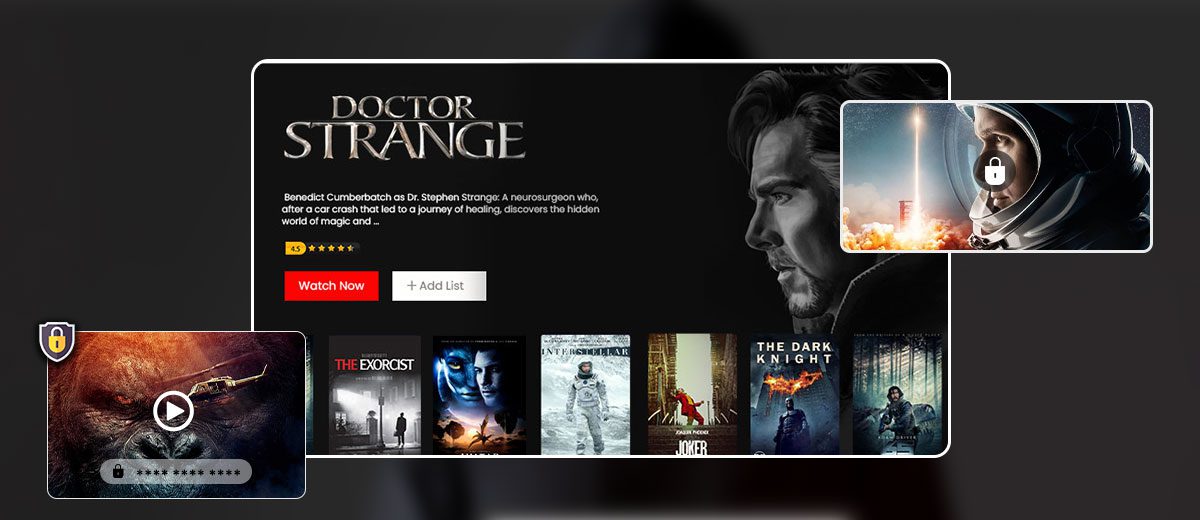Piracy of content, whether it’s a song, a movie, or any other work of art, has been a problem for decades. The most widespread kind of piracy we are aware of is illegally downloading a film prior to its theatrical release or official television premiere. The same may be said for music.
Due to the lockdown last year, theatres were forced to close their doors for the most part, with some relief earlier this year, only to be forced to reopen due to the second Covid-19 wave. Not only did customers resort to OTT platforms for entertainment, but so did filmmakers and production companies, with numerous releasing films on Netflix, Amazon Prime, Zee5, and Disney+Hotstar. It has become customary to release new content on a regular basis.

Even advertising video-on-demand (AVoD) platforms like MX Player are affected. Although the platform’s content is free, the company stands to lose advertising revenue, which is calculated based on viewership. MX content is seen illegally by at least 15-20 million individuals on a regular basis, resulting in ad revenue loss.
Piracy, or the unlawful sharing of videos, is undoubtedly the most serious danger to the OTT industry’s economic and long-term viability. Video piracy is estimated to generate $9.1 billion in income in 2019, according to recent OTT streaming revenue data. By 2022, the loss is expected to increase by 38% to 12.5 billion US dollars.
This is clearly not a favourable situation. OTT firms put a lot of effort and resources into creating and distributing content. However, with the rise of video piracy, all of their efforts are for nought, raising questions about their long-term viability in today’s competitive OTT market.
If you’re a video streaming service provider or content producer dealing with illicit video distribution, now is the time to plan and implement proven anti-piracy methods in order to save your online video business in the long run.
Don’t worry, there’s no need to employ a lawyer or a rights management firm. Dealing with OTT video piracy isn’t as difficult or costly as you would assume. You can easily lessen the effects of piracy and assure a secure streaming ecosystem with a little critical thinking, persuasion skills, and smart security integrations.
Efforts at securing content:
According to reports, a large number of applications and websites that distribute pirated content are not subject to Indian law. This makes it more difficult for OTT providers to design measures to avoid having their content stolen and shared.
Real-time fix:
Every print of a movie distributed in theatres is watermarked, so that if a viewer shares it, it can be traced back to the original. As a result, any theatre that permits piracy on its premises can be tracked down and blacklisted. It’s possible that the same will have to be done with PPV. Alternatively, a print is only viewable for a few hours after purchasing. ” This is a significant reason why PPV has not been a success in many countries due to implementation difficulties.
Increasing demand:
Free content culture:
Because the bulk of online viewers, particularly millennials, grew up with a free content culture (where they could go online and stream video for free), they just do not choose to pay to consume media on the internet. They believe that by simply providing a few personal details such as an email address, a cell phone number, and a Facebook login, they may gain access to any video they see online.
Budget constraint:
Free content culture: Because the bulk of online viewers, particularly millennials, grew up with a free content culture (where they could go online and stream video for free), they just do not choose to pay to consume media on the internet. They believe that by simply providing a few personal details such as an email address, a cell phone number, and a Facebook login, they may gain access to any video they see online.
Abundant supply:
Illegal video streaming sites:
Users who are desperate to view their favourite online web series or the latest movies for free frequently visit illegal video streaming sites because of the instant content availability and large video library. Such websites or programmes break down the exclusive content silos seen on major platforms like Netflix, Prime Video, Hulu, and others, allowing videos to be viewed on a variety of devices such as smart TVs, mobile phones, digital media players, and video game consoles.
Tips to beat ott video piracy:
Follow the AVoD trend
Given the huge demand for free content in the OTT world, it’s a good idea to provide customers with ad-based streaming services at no cost. When people sign up for free video streaming services, they don’t mind watching a few adverts. As a result, adhering to the AVoD trend will significantly lower the demand for pirated content, as the content is already freely available.
Subscription package with a free trial
If you want to experiment with a subscription-based streaming strategy, we recommend offering a free trial to your subscribers, similar to Netflix. Many times, video fans only want to watch a specific series or movie and nothing else.
Content-based pricing
We believe that the best method to combat OTT video piracy is to use a content-based pricing model. Consider the following scenario: in your streaming store, each video has a set price, and consumers can directly access their selected material by paying that fee. They can pay for a single show instead of a month’s membership, and they won’t have to pay again once that programme ends. This technique can effectively relieve OTT consumers’ monthly budget restrictions and prevent them from resorting to piracy.
Final thought:
The greatest strategy to lessen the effects of OTT video piracy is to give customers access to the content they want, on the devices they want to watch it on, lawfully and at a reasonable price. Conduct extensive study into audience behaviour and use the established anti-piracy measures listed above to ensure a safe and secure streaming environment.


